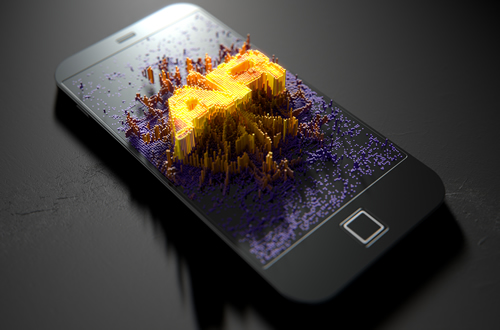Our classrooms are transforming—not just with new technology or furniture—but by completely transporting students to new places and experiences. Location, funding, and even reality are no longer limiting our students of personalized learning.
Early adopters of #ARVRinEDU (Augmented reality and virtual reality in education) have sought out resources to meet the demands and needs of our students and managed to keep their spending in line with the school budget. These immersive technologies are providing more than the “wow factor.” They are building a bridge that breaks through classroom limitations.
A small percentage of classrooms will have the funding and resources to bring mobile devices and viewers to every student, but the majority of our schools don’t have class sets. Most schools do, however, have access to tablets or laptops, or they have a BYOD (Bring Your Own Device) arrangement. By using what we already have, we eliminate the need for massive purchases, additional training, and the rapid transition to outdated devices. With the flood of new AR and VR tools ranging from web to app-based, our classrooms can include engaging activities that are flexible with the tools we already have available.
As students engage with content, they want the learning to be personalized, interactive, gamified, and authentic. Because AR and VR allow students to explore what they find interesting and interact with 3D objects as many times as necessary to gain understanding, educators no longer have to provide the same experience for every student.
Our students are hungry for the opportunity to show what they know. Using immersive technology, they have the freedom to create content that would otherwise be impossible. These immersive activities are easy to develop without extensive training or expertise. Here are five of my favorites.
Human Anatomy Atlas 2018: This iOS app lets students dissect an AR cadaver and explore the human body. Learn about all the body systems, watch muscle movements, and more.
Storyfab: Reconstruct and record a scene using AR with this iOS app. Using a visual such as a book or photo, students can add AR props and characters on top of the image. Push record and animate the characters with emotions and gestures while walking around the scene for the best shot.
RoundMe: Create and describe a VR field trip or virtual tour using informational hotspots, portals to other locations, and directional sound. Although a VR adventure is more immersive when using a viewer, apps like RoundMe make the experience available in full-screen mode to provide flexibility for viewing. (Android & iOS)
CoSpaces Edu: Using web-based applications such as CoSpaces Edu, students can design a VR world by dragging and dropping 3D objects into the 360 space. Create simple worlds or design more complex ones as your coding skills improve. Students can design online or in the app.
AR Moon – Explore Solar System: This iOS app lets teachers transport their classroom as students use AR and VR to walk through a portal and explore the surface of the moon. The students are challenged to drive the rover to specific locations while controlling the arm of the machine to perform tasks. One of the app’s many benefits is that it encourages active learning, with students getting up and moving around.
Many educators are enthusiastic about the technology, but when it comes to implementation, they don’t know where to begin. In my book, Learning Transported: Augmented, Virtual, and Mixed Reality for All Classrooms (published by the International Society for Technology in Education), I provide resources that connect to standards from elementary to secondary lessons.
- 4 ways to encourage play in education - April 25, 2024
- CoSN IT Leader Spotlight: Lisa Higgins - April 25, 2024
- It’s time to pay student teachers - April 25, 2024

